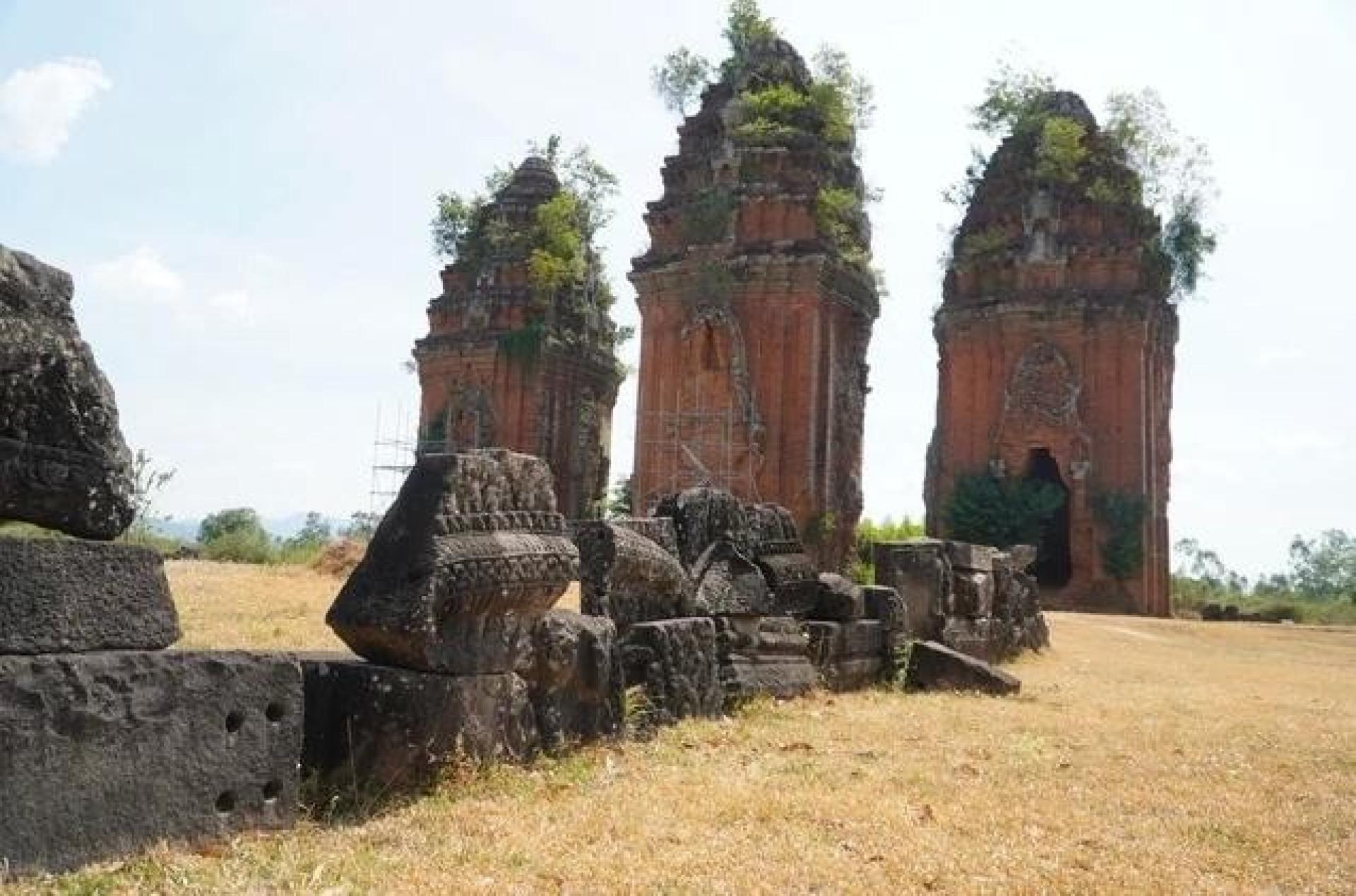(Hanoi, 8th, Comprehensive News) The Yanglong Tower Complex, located in Ping'an Township, Gia Lai Province, is in urgent need of a large-scale archaeological excavation in order to prepare for the restoration of the tallest Cham tower in Southeast Asia.
The Yanglong Tower Complex, about 40 kilometers from the center of Gia Lai Province, is also known as Anzheng Tower, Ping'an Tower, or Elephant Tower. It is a typical tower complex of the Cham people, built in the late 12th to early 13th century, and is one of the most distinctive architectural heritages in Cham culture.
This heritage complex showcases the harmonious integration between traditional Cham art and Khmer architectural styles.
Although it has been listed as a special national relic, after more than 800 years of weathering, along with the impacts of war, human activities, and natural factors, the tower complex has now been severely damaged.
The central tower has almost completely lost its vestibule and foyer structure; although the south tower remains generally intact, its roof and some details have collapsed. The north tower is the most severely damaged, with its body broken, despite reinforcement work being carried out in 1984.
In three archaeological excavations conducted in 2006, 2007, and 2009, researchers explored over 3,000 square meters of the area, discovering many stone-paved layers, open-air religious structures, Yoni relics symbolizing fertility, and thousands of precious cultural artefacts.
However, experts point out that the current excavation area is still far from sufficient to cover the entire relic area, especially the key sites that may be hiding unique artefacts.
Dr. Bui Chi Hoang, former Vice President of the Southern Institute of Social Sciences and Associate Professor, commented that the Yanglong Tower Complex is the pinnacle of Cham architecture and sculpture. After hundreds of years, under the influence of plant erosion and human destruction, many parts of the tower structure have been damaged, making restoration work imperative.
Nguyen Thanh Quang, a member of the Gia Lai Provincial Association of Historical Sciences, warned: "If the scope of the archaeological excavation is not expanded, many precious artifacts may forever be buried. Once restoration begins, the opportunity for further excavation will be lost."
